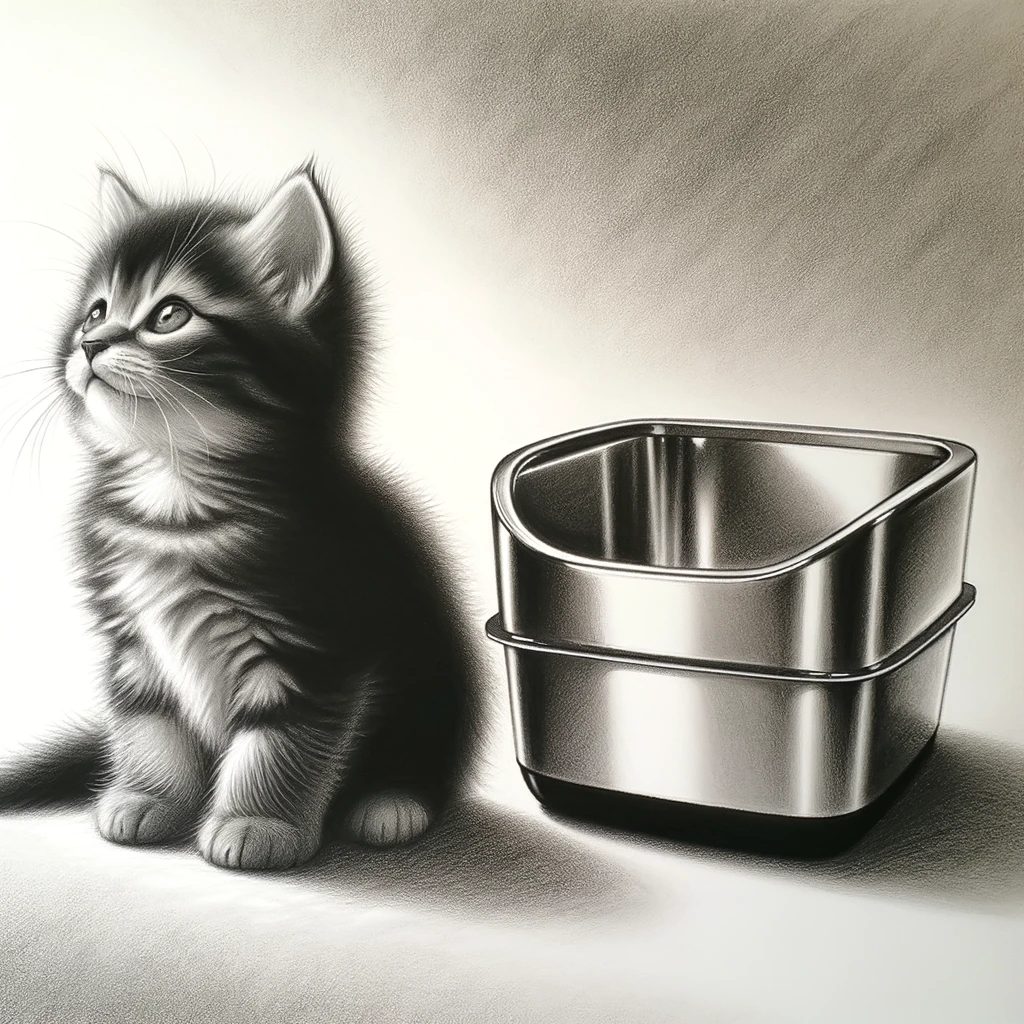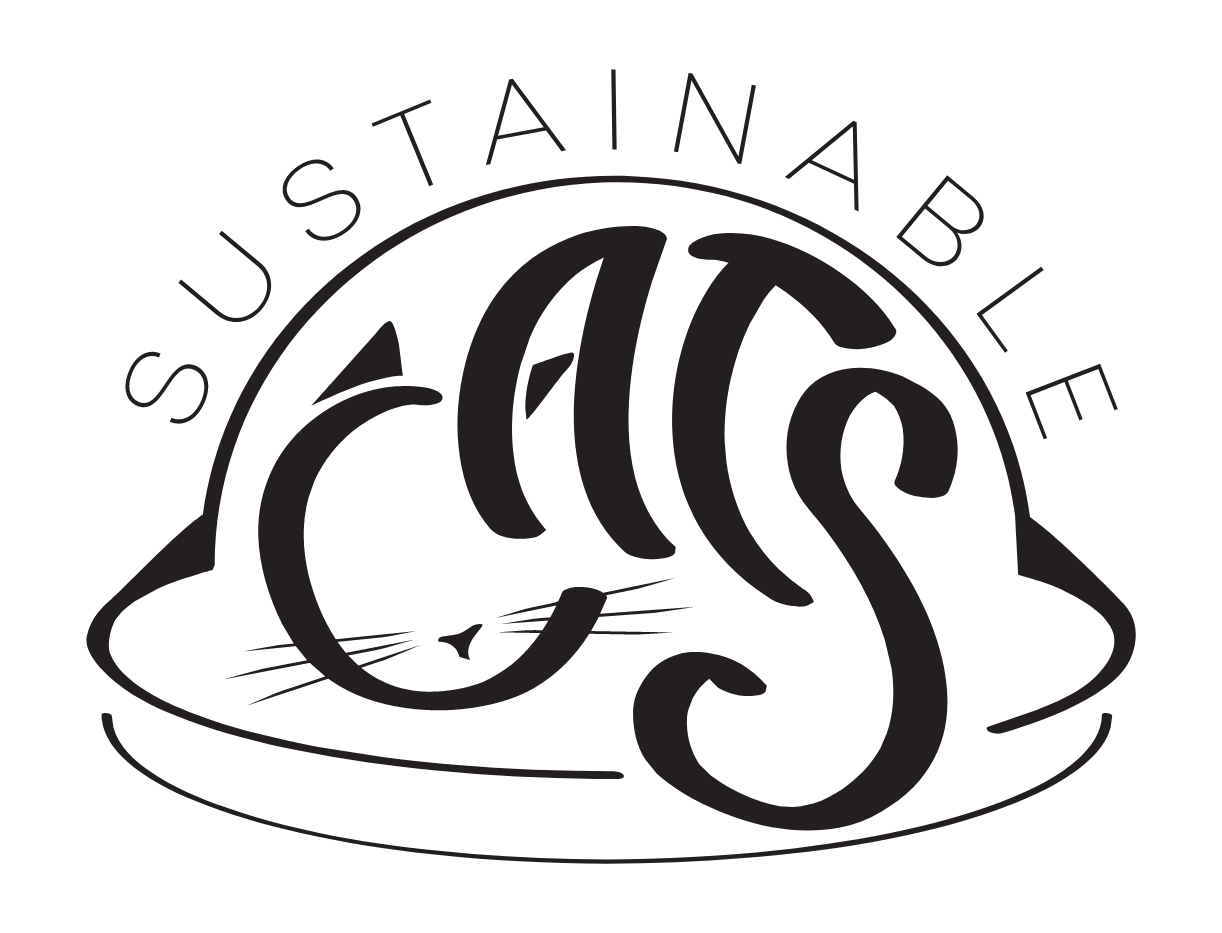Blog
Kitty Litter Box Lessons Revealed: A Definite Guide

Kitty litter box lessons are essential to being a responsible cat owner. By using sustainable cat litter, you not only provide a comfortable and hygienic environment for your furry friend but also contribute to a greener planet. In this definitive guide, we will walk you through the process of litter box training and provide recommendations on the best sustainable kitty litter options available.
Choosing the Right Litter Box
When selecting a litter box for your kitty, it’s essential to consider various factors to ensure their comfort and hygiene. While several options are available, one sustainable choice that stands out is the stainless steel litter box. This chapter will explore the benefits of stainless steel litter boxes and why they are the superior choice for environmentally conscious cat owners.
The Benefits of Stainless Steel Litter Boxes
- Durability: Stainless steel litter boxes are incredibly durable and long-lasting. Unlike plastic litter boxes that can crack or break over time, stainless steel boxes are resistant to wear and tear, ensuring they can withstand the test of time.
- Hygiene: Stainless steel is non-porous and highly resistant to bacteria and odours. It is also easy to clean and sanitise, providing a more hygienic environment for your kitty.
- Sustainability: Stainless steel is a sustainable material choice for litter boxes. It is made from recycled materials and is 100% recyclable at the end of its lifespan. By opting for a stainless steel litter box, you reduce waste and promote a circular economy.
- Chemical-Free: Unlike some plastic litter boxes, which may contain harmful chemicals, stainless steel litter boxes are free from toxins such as BPA and phthalates. This ensures the safety and well-being of your cat and the environment.
- Odour Control: Stainless steel has natural odour-resistant properties, helping to minimise unpleasant smells in your home. This is particularly beneficial for cat owners concerned about maintaining a fresh and clean living space.
Considerations When Choosing a Litter Box
While stainless steel litter boxes offer numerous advantages, it’s essential to consider other factors when deciding. Here are a few additional considerations:
- Size: Ensure the litter box is large enough for your cat to move around and dig comfortably. It should provide ample space for them to perform their natural behaviours.
- Accessibility: Consider your cat’s age and mobility. If you have a kitten or an older cat, opt for a litter box with low sides to make it easier for them to enter and exit.
- Number of Cats: If you have multiple cats, it’s recommended to have one litter box per cat, plus an extra one. This helps prevent territorial issues and ensures that each cat has their own designated space.
- Covered vs. Uncovered: Some cats prefer privacy and may feel more comfortable using a covered litter box. However, others may prefer an uncovered box to have a clear view of their surroundings. Observe your cat’s behaviour and preferences to determine which option is best for them.
Conclusion
Choosing the correct litter box is crucial for your cat’s comfort and well-being. While various options are available, stainless steel litter boxes offer exceptional benefits, making them the sustainable choice for environmentally conscious cat owners. With their durability, hygiene, sustainability, and odour-control properties, stainless steel litter boxes provide a superior option that promotes a greener and healthier environment for your cat and the planet.
Introducing the Litter Box
Introducing the litter box to your kitty is crucial in their training process. It sets the foundation for proper litter box habits and ensures comfort and hygiene. In this chapter, we will guide you through the process of introducing the litter box to your furry friend, helping them become familiar with this essential part of their daily routine.
Step 1: Choosing the Right Location
Selecting the right location for the litter box is critical to ensuring your cat’s acceptance and ease of use. Consider the following factors when choosing a spot:
- Accessibility: Place the litter box in a quiet and easily accessible area of your home. Avoid high-traffic areas or places with loud noises that may startle your cat.
- Privacy: Cats prefer privacy when using the litter box. Find a location that offers some seclusion, such as a corner or a quiet room, to make your cat feel more comfortable.
- Multiple Boxes: If your home has a large footprint or multiple floors, consider strategically placing multiple litter boxes throughout the house. This will provide convenience for your cat and help prevent accidents.
Step 2: Introducing the Litter Box
Once you have chosen the location, follow these steps to introduce the litter box to your kitty:
- Show and Tell: Show your cat the litter box and let them explore it at their own pace. Allow them to sniff and investigate the box without any pressure.
- Positive Reinforcement: Encourage your cat to enter the litter box by gently placing them inside. Reward them with praise or a treat to create a positive association with the litter box.
- Repeat and Reinforce: Repeat this process multiple times throughout the day, especially after meals or naps. Consistency is vital in helping your cat understand that the litter box is their designated spot for elimination.
- Patience and Observation: Be patient with your cat as it adjusts to the litter box. Observe its behaviour and look for signs that it is becoming more comfortable, such as scratching the litter or using it for elimination.
Step 3: Positive Association
To further encourage your cat to use the litter box, create a positive association with the space:
- Keep it Clean: Scoop the litter box daily to remove waste and clumps. Cats prefer a clean and odour-free environment, so maintaining cleanliness is essential.
- Avoid Harsh Cleaners: Use mild, unscented soap and water when cleaning the litter box. Harsh chemicals or strong scents may deter your cat from using it.
- Consistent Routine: Establish a consistent routine for your cat’s litter box usage. Cats are creatures of habit, so having a regular schedule helps them anticipate and remember when to use the litter box.
- Avoid Punishment: Never punish your cat for accidents or inappropriate elimination. This can create fear or anxiety around the litter box and hinder their progress. Instead, focus on positive reinforcement and redirection.
Conclusion
Introducing the litter box to your kitty is crucial in their training journey. By choosing the right location, providing positive reinforcement, and maintaining a clean and inviting environment, you can help your cat develop proper litter box habits. Remember to be patient, observe your cat’s behaviour, and make adjustments as needed. With time and consistency, your furry friend will become comfortable and confident using the litter box, ensuring a harmonious and hygienic living environment for both of you.
Choosing Sustainable Cat Litter
Selecting the right cat litter is important for your cat’s comfort and hygiene and for the environment. With a growing focus on sustainability, several eco-friendly, natural litter options are now available. We will explore various types of sustainable cat litter and discuss their benefits, including wood (pine) pellet cat litter, coffee grounds cat litter, tofu cat litter, corn-based cat litter, wheat-based cat litter, and recycled paper cat litter.
Wood (Pine) Pellet Cat Litter
Wood pellet cat litter, often made from compressed pine sawdust, offers several advantages:
- Biodegradable: Wood pellets are biodegradable, meaning they break down naturally over time, reducing waste and environmental impact.
- Odour Control: Wood pellets have excellent odour control properties, absorbing and neutralising unpleasant smells.
- Low Dust: Wood pellet litter tends to have minimal dust, making it a healthier option for cats and humans.
- Natural and Renewable: Made from a sustainable resource, wood pellet litter is a natural and renewable choice for eco-conscious cat owners.
Coffee Grounds Cat Litter
Coffee grounds cat litter is a unique and innovative option that repurposes used coffee grounds. Here are its notable features:
- Eco-Friendly: By repurposing coffee grounds, this litter helps reduce waste and gives a second life to a byproduct.
- Natural Odor Absorption: Coffee grounds have natural odor-absorbing properties, helping to control unpleasant smells.
- Low Dust: Coffee grounds litter generally produces less dust, creating a healthier environment for your cat.
- Chemical-Free: Coffee grounds are free from harmful chemicals, providing a safe and non-toxic option for your cat.
Tofu Cat Litter
Tofu cat litter is made from soybean residue, providing a sustainable alternative. Consider the following benefits:
- Biodegradable: Tofu litter breaks down naturally and reduces environmental impact.
- Excellent Clumping: Tofu litter often forms strong clumps, making cleaning and maintaining the litter box easier.
- Low Dust: Tofu litter tends to have minimal dust, promoting better respiratory health for your cat.
- Renewable Resource: Made from soybean residue, tofu litter utilises a renewable resource, making it an eco-friendly choice.
Corn-Based Cat Litter
Corn-based cat litter is made from renewable corn resources and offers several advantages:
- Biodegradable: Corn-based litter is biodegradable, breaking down naturally and reducing waste.
- Clumping Ability: Corn-based litter often forms strong clumps, making it easier to clean the litter box.
- Natural Odor Control: Corn naturally helps control odours, keeping your home smelling fresh.
- Renewable Resource: Corn is a renewable resource, making corn-based litter a sustainable choice.
Wheat-Based Cat Litter
Wheat-based cat litter is another sustainable option made from renewable wheat resources. Consider the following benefits:
- Biodegradable: Wheat-based litter breaks down naturally and reduces environmental impact.
- Clumping Ability: Wheat-based litter often forms strong clumps, making it easier to clean the litter box.
- Natural Odor Control: Wheat naturally helps control odours, keeping your home smelling fresh.
- Renewable Resource: Wheat is renewable, making wheat-based litter an eco-friendly choice.
Recycled Paper Cat Litter
Recycled paper cat litter is made from recycled newspaper or other paper materials. Consider the following benefits:
- Eco-Friendly: By repurposing paper waste, recycled paper litter helps reduce landfill waste and promotes recycling.
- High Absorbency: Recycled paper litter is highly absorbent, effectively trapping moisture and controlling odours.
- Low Dust: This litter option produces minimal dust, creating a healthier environment for your cat.
- Soft Texture: Recycled paper litter provides a smooth and comfortable texture for your cat’s paws.
Conclusion
Choosing sustainable cat litter is a responsible choice that benefits both your cat and the environment. Wood (pine) pellets, coffee grounds, tofu, corn-based, wheat-based, and recycled paper litters offer eco-friendly compostable alternatives to traditional clay litters. When selecting the most suitable option, consider your cat’s needs, such as odour control, dust levels, and clumping ability. By opting for sustainable cat litter, you contribute to a greener future while providing a comfortable and hygienic litter box experience for your furry friend.
Introducing Kitty to Sustainable Cat Litter
Introducing your kitten to sustainable cat litter is essential in their development and training. Following a few simple steps, you can help your kitten become familiar with the litter and encourage them to use it consistently. This chapter will discuss practical ways to introduce a kitten to cat litter, focusing on sustainable options.
Step 1: Choose the Right Litter
Select a suitable, sustainable cat litter option before introducing your kitten to the litter box. Consider factors such as biodegradability, odour control, and dust levels. Some popular sustainable choices include wood pellet litter, recycled paper litter, or tofu litter. Choose a litter that aligns with your kitten’s needs and preferences.
Step 2: Set Up the Litter Box
Place the litter box in a quiet and easily accessible area of your home. Ensure that it is away from loud noises or high-traffic areas. Ensure the litter box is clean and filled with a thin layer of the chosen sustainable cat litter. Avoid filling it too high, as kittens may find it challenging to navigate through deep litter.
Step 3: Show Your Kitten the Litter Box
Gently introduce your kitten to the litter box by placing them inside. Allow them to explore and sniff around the litter box at their own pace. Avoid forcing them or making them feel overwhelmed. Let them become familiar with the texture and scent of the litter.
Step 4: Encourage Exploration
Encourage your kitten to explore the litter box using positive reinforcement. Offer praise, gentle petting, or a small treat when they show interest in or step inside the box. This positive association will help them understand that the litter box is a safe and rewarding place to be.
Step 5: Observe and Redirect
Observe your kitten’s behaviour and body language. If you notice signs they need to be eliminated, such as sniffing or circling, gently place them in the litter box. Allow them to dig and scratch the litter, an instinct for cats. If they are eliminated in the litter box, reward them with praise and a treat.
Step 6: Consistency and Patience
Consistency is critical when introducing your kitten to sustainable cat litter. Establish a routine by placing them in the litter box after meals, playtime, or naps. Be patient and understanding if accidents occur outside the litter box. Avoid scolding or punishing your kitten, which may create fear or anxiety around the litter box.
Step 7: Gradual Transition
If you are transitioning your kitten from a different type of litter, such as clay litter, to a sustainable option, it’s essential to do so gradually. Start by mixing a small amount of the new litter with the old litter, gradually increasing the proportion of the sustainable litter over time. This gradual transition will help your kitten adjust to the new litter without causing stress or confusion.
Step 8: Maintain a Clean Litter Box
To ensure your kitten continues to use the litter box, maintain cleanliness. Scoop the litter box daily to remove waste and clumps. Add fresh litter as needed to keep it clean and odour-free. Regularly clean the litter box with mild, unscented soap and water to maintain hygiene.
Conclusion
Introducing your kitten to sustainable cat litter requires patience, consistency, and positive reinforcement. Following these steps and providing a comfortable and clean litter box can help your kitten develop proper litter box habits. Remember to choose a suitable sustainable litter option, observe your kitten’s behaviour, and adjust as needed. With time and guidance, your kitten will become comfortable and confident using the litter box, ensuring a harmonious and eco-friendly living environment for both of you.
Maintaining the Litter Box
To ensure your kitty continues to use the litter box, follow these maintenance tips:
- Scoop the litter box daily to remove waste and clumps.
- Add fresh litter as needed to maintain a clean and odour-free environment.
- Clean the litter box regularly with mild, unscented soap and water.
- Replace the litter box periodically to prevent bacterial buildup.
Conclusion
By following this definitive guide, you can successfully teach your kitty to use the litter box with the help of sustainable cat litter. Remember to choose the correct litter box, introduce the litter gradually, and maintain a clean and comfortable environment for your furry friend. By making sustainable choices, you contribute to a healthier planet for your cat and future generations of feline companions.









